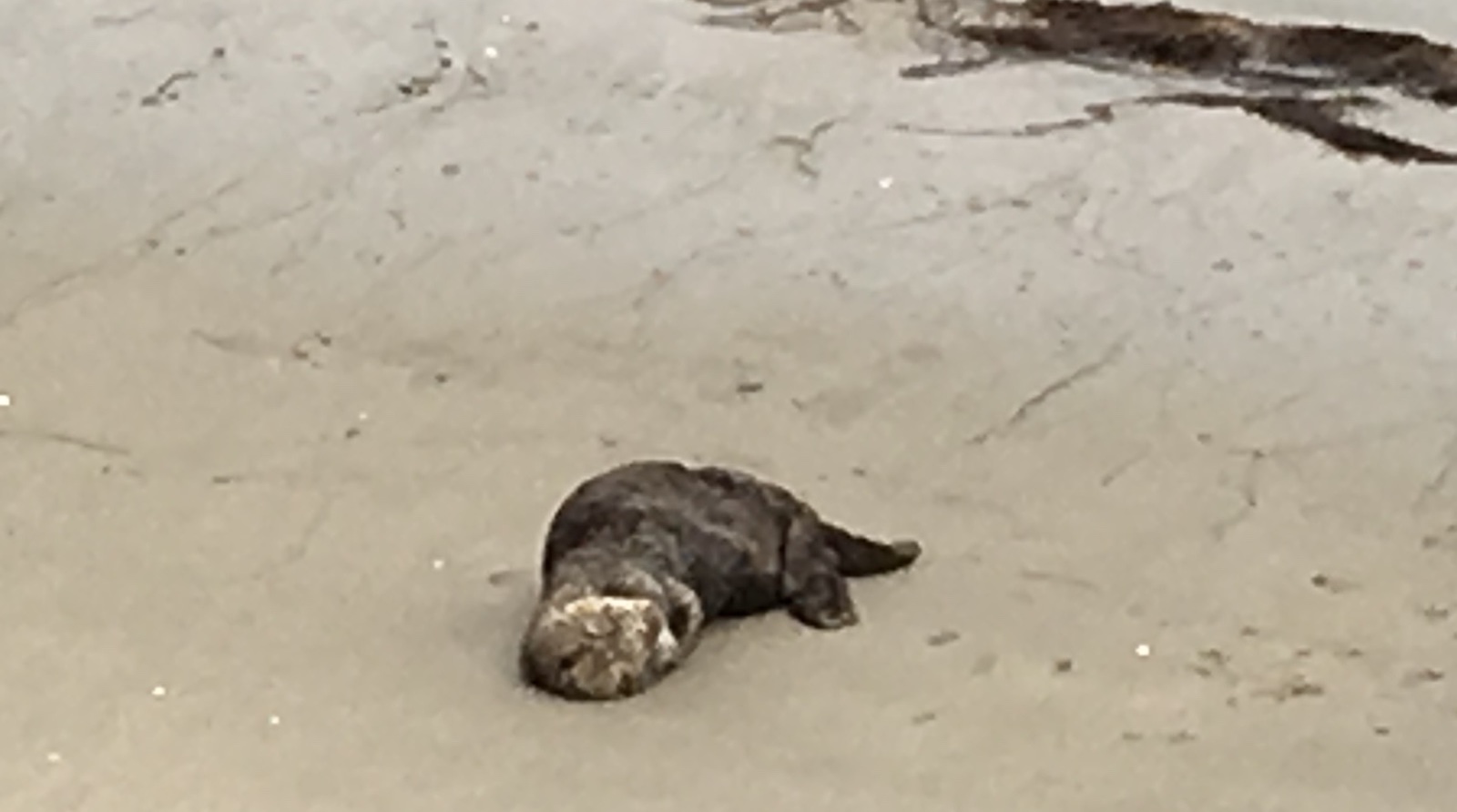
Bay area wildlife hikes your family can take in every season
Take a wildlife hike every month. Emily Rusch shares her favorite spots to take your teens, tweens, and adventurous younger kids to see California wildlife.

My family has always spent a lot of time outdoors, but we became particularly attuned to the seasons of hiking in northern California during the pandemic, when we started going out hiking multiple times a week to get our young kids out of the house.
Our trips outdoors are always more interesting when there’s wildlife to find! Here are some of our family’s favorite walks and hikes to see wildlife, along with a few other trips that are on our list but we haven’t done yet. Since many of these animals are either only seen or better seen at certain times of the year, I’ve organized my list by recommended month to go.
January: Elephant seals at Drake’s Beach (easy walk)

At Drake’s Beach, at least in the last couple of years, we have been able to walk along the beach close, but not too close, to elephant seals lolling about and occasionally rearing their heads. Walk down the beach and back for a little exercise, following all beach closure rules and giving ample space to any elephant seals you encounter. Keep an eye out for gray whales migrating south. If you stop at the ranger station on your way in and get a permit, you can make a bonfire on the beach at sunset before heading home.
February: California Newts in Briones Regional Park (medium hike)

The orange-bellied California newts can be found throughout the East Bay, including Tilden Park in Berkeley and Redwood Regional Park in Oakland. We reliably see them in and near the Sindicich Lagoons at Briones Regional Park in the late winter and early spring, both walking through the grass nearby and swimming at the edges of the lagoons.
March: California condors at Pinnacles (hard hike)

March is my favorite time of year to visit Pinnacles National Park, because it’s lush and if you catch your timing right, there are carpets of yellow wildflowers on the hillsides and water in the caves, but it’s not too hot. And Pinnacles is the best place in the state to view the iconic California condor in the wild. To be honest, I’ve never been sure I have actually seen a condor while I’m there, but I know many others have, and I love the possibility of a sighting! Show up extra early to get a parking spot. Your best sighting opportunity would be on the High Peaks trail, but warning that the High Peaks trail is a tricky hike for little kids.
April: Horned lizards at Mount Diablo (hard hike)

April is our favorite month for hiking at Mount Diablo State Park, because of the temperatures and the wildflowers, and one of our favorite trails is the Eagle Peak trail, which you can access at the Mitchell Canyon Staging Area. We were astonished the first time we saw the prehistoric-looking horned lizard. We have seen these lizards several times since, always on the Eagle Peak trail in the chaparral landscape between Eagle Peak and the junction with Meridian Ridge. This hike has a lot of elevation gain, but our kids know that we’ll stop for ice cream when we’re done.
Or gray whale viewing at Point Reyes National Seashore (easy walk)

Gray whales migrate south in late fall and winter, with late December through January being the best time to see them going south. They head north again in the late winter and spring, and mothers and calves typically come closest to shore in late April through early May. The best viewing spots are up higher, like Chimney Rock, but we also saw a gray whale in late April while hanging out at Limantour Beach at Point Reyes National Seashore, which is a great place for a beach walk.
May: Anise swallowtail caterpillars at the Berkeley Marina (easy walk)

Fennel grows like a weed throughout our neighborhood, and if you look carefully in the springtime, you can find anise swallowtail caterpillars on many of their stalks. At the very start of the pandemic in 2020, my kids and I enjoyed searching for caterpillars, and then taking them home, and feeding them fennel fronds until they turned into chrysalises, and eventually swallowtail butterflies. The fields at the base of the Berkeley marina have been a reliable spot for us to find them.
June: Banana slugs in Henry Cowell State Park (your choice of hike)

Up until the CZU Lightning Complex fire three years ago, we took our kids to Big Basin State Park in the Santa Cruz mountains every Memorial Day weekend with a group of friends. On one long hike I think we counted up to at least 75 banana slugs spotted. With limited access to Big Basin State Park these days, nearby Henry Cowell State Park is a good option for spying banana slugs while hiking.
July: Sea otters and harbor seals at Moss Landing State Beach (easy walk)

Sea otters are such a pleasure to see in the wild, and one of the closest places to the Bay Area to see them is at Moss Landing State Beach and the Elkhorn Slough State Marine Conservation Area. The last time we took a day trip, we saw several sea otters frolicking in the lagoon within easy viewing, and others, like the one above, lounging on the shore. An abundance of birds and other wildlife can also be seen in the Elkhorn Slough. And if you stick around for the night, from June through October, a local company leads evening kayaking tours to experience bioluminescence in the waters.
August: Tule elk at Tomales Point (easy to hard hike, your choice)

You can reliably see the Tule elk year round at Tomales Point on the northern tip of Point Reyes National Seashore. You don’t even need to get out of the car in order to see small herds of elk as you head out to Pierce Ranch, but it’s definitely a richer experience to get out and hike. In our experience, while the whole hike out to the tip of Tomales Point is more than 10 miles roundtrip, you don’t have to hike too far before you start spotting elk off the trail. Visiting in late August through October is special because male tule elks bellow out to female tule elks to begin the mating season, a ritual called rutting.
September: Tarantulas at Mount Diablo (medium to hard hike, your choice)

At Mitchell Canyon at Mount Diablo State Park, the tarantulas come out in September and October to mate. You can sign up for a docent-led walk on the Save Mount Diablo site or just search for them yourself as you hike up the Mitchell Canyon trail. Late afternoon/early evening is the recommended time of day to increase your odds of spotting them.
October: Raptor watching at Hawk Hill (easy to hard hike, your choice)
The aptly named Hawk Hill in the Marin Headlands is a mecca for migrating hawks and other raptors, and September and October are the best months for viewing. According to the National Park Service website, sometimes hawk watchers see more than 1000 in an afternoon! You can just park and view, or you can pick a Marin Headlands trail of choice to walk while you look.
November: Ladybugs in Reinhart Redwood Regional Park in Oakland (medium hike)

Ladybugs may not inspire the same awe as elephant seals or condors, but it is always remarkable to hike along the Stream Trail at Redwood Regional Park in the winter, and suddenly see thousands of ladybugs congregating together on branches and fence posts. This picture was taken in October 2022 on the Stream Trail close to where it intersects with the Prince Trail.
December: Sea stars and other tidepool creatures at the Fitzgerald Marine Reserve (easy walk)

I love tidepools. So check the tide charts for a good low tide during the daylight hours and head over to the Fitzgerald Marine Reserve. In the second to last week of December 2022 the tide charts predict particularly low tides in the afternoon – a perfect time for a walk and exploring the pools!
Or Monarch butterflies at Pacific Grove (easy walk)
The monarch butterflies are back at the Monarch Sanctuary in Pacific Grove. This is an easy ADA accessible walk for kids and grandparents of all ages. More information on visiting the grove is available at the Pacific Grove Museum of Natural History.
Of course the animals listed here are only a sampling of the species that you can see while hiking throughout the bay area. Unfortunately, most of these creatures occupy a fraction of the habitat that they historically occupied, and in some cases their habitat is fragmented into small pockets. The southern sea otter, for example, only occupies 13% of its historical habitat off the California coast. The Blainville’s horned lizards had a historic range from the Bay Area down to the Mexican border, but now the individuals that we see on Mount Diablo are boxed in on all sides by development. Even birds like California condors need wildlife corridors to thrive.
Please take a minute to add your name to Environment California’s campaign for more funding for wildlife corridors.
Topics
Authors
Emily Rusch
Vice President and Senior Director of State Offices, The Public Interest Network
Emily is the senior director for state organizations for The Public Interest Network. She works nationwide with the state group directors for PIRG and Environment America to help them build stronger organizations and achieve greater success. Emily was the executive director for CALPIRG from 2009-2021, overseeing a myriad of CALPIRG campaigns to protect public health, protect consumers in the marketplace, and promote a robust democracy. Emily works in our Oakland, California, office, and loves camping, hiking, gardening and cooking with her family.
Find Out More

Guide to planting a pollinator-friendly garden

Reducing plastic waste in the states

Progress Report: President Biden’s First Year

